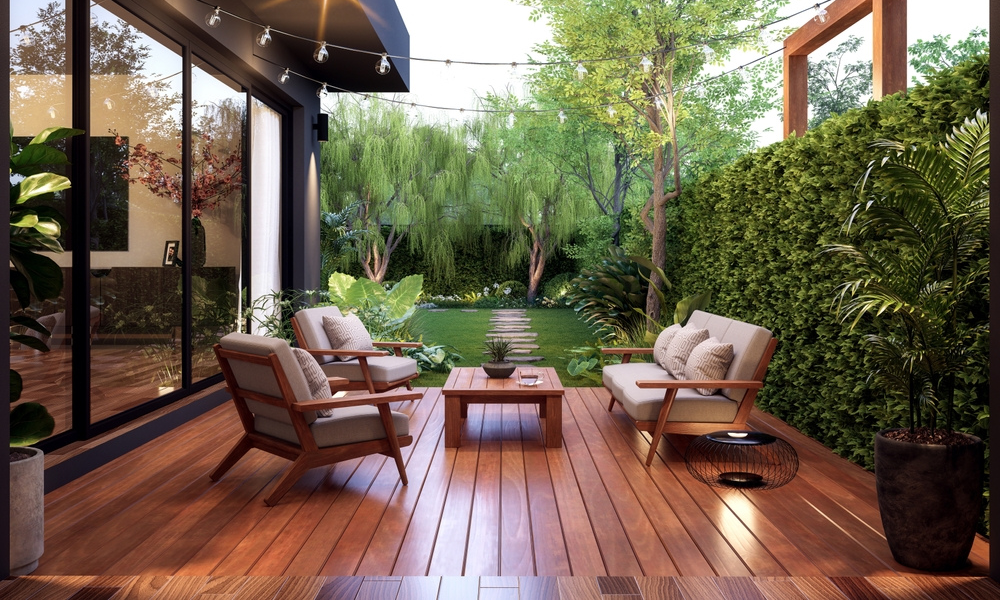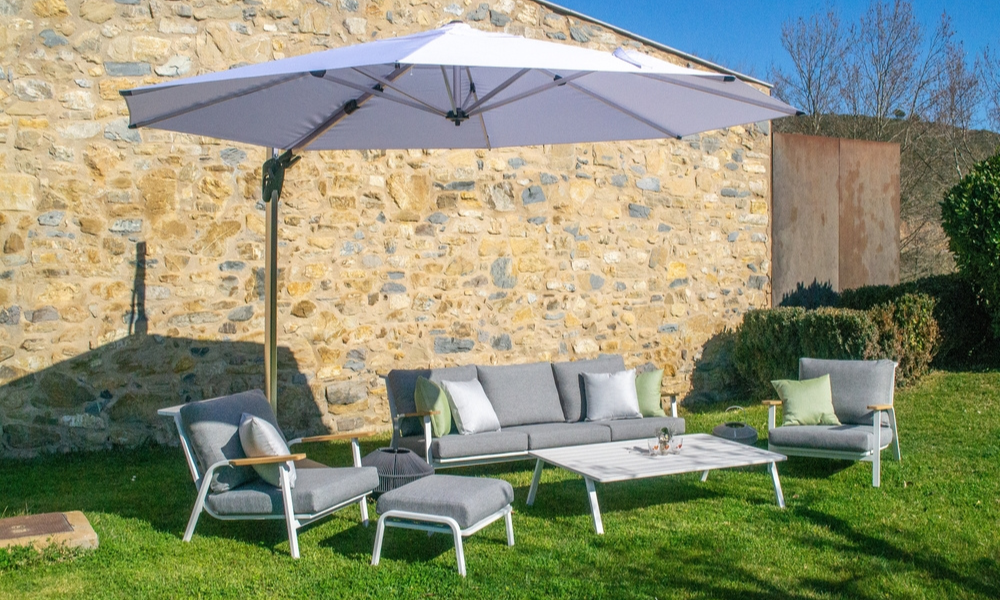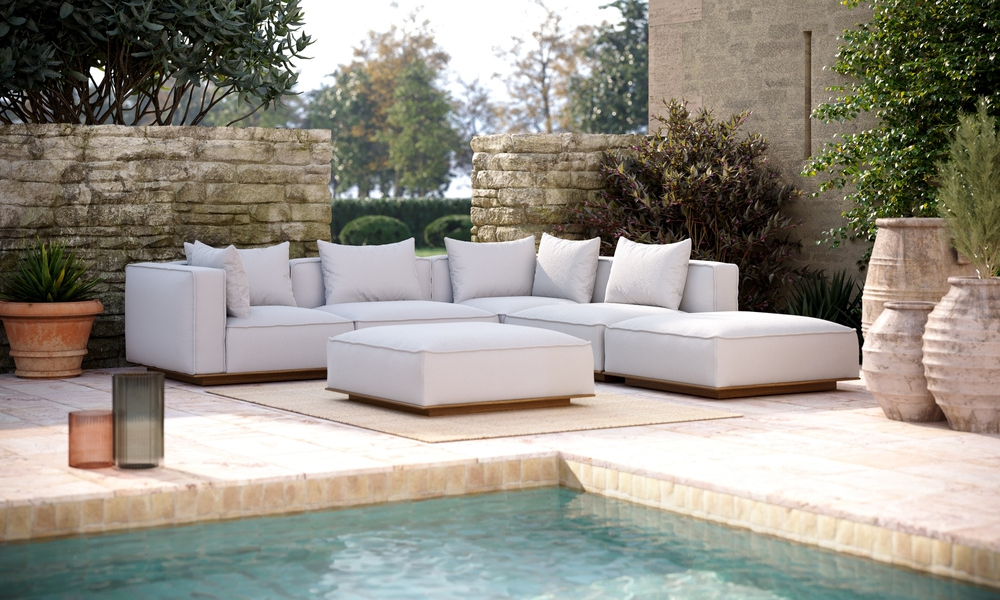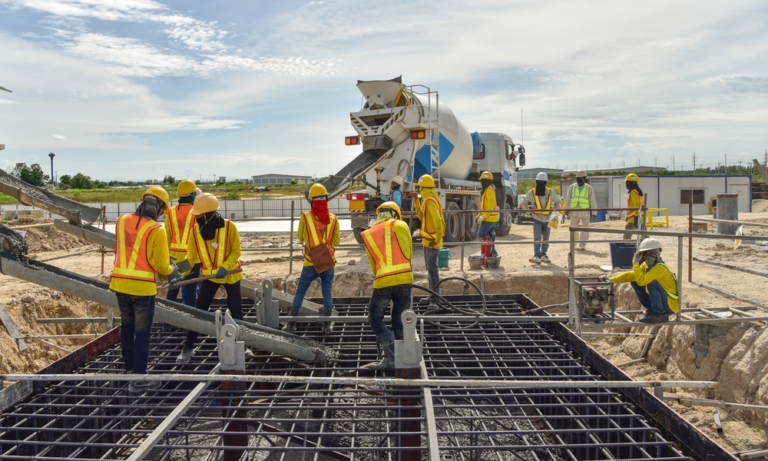Estimated reading time: 5 minutes
Outdoor living spaces are no longer just about a patio and a grill. Today, they’ve evolved into multi-functional retreats where families cook, relax, and entertain. Concrete, a material once seen as purely functional, is now at the forefront of this transformation. Its versatility, durability, and aesthetic potential make it a cornerstone of modern outdoor designs.
What You’ll Learn in This Guide
- Why concrete is a game-changer for outdoor living.
- Creative ways to use concrete in patios, kitchens, and more.
- Top design trends for concrete outdoor spaces.
- Eco-friendly options to keep your space sustainable.
- Practical tips for incorporating concrete into your plans.
Let’s explore how concrete is redefining outdoor living.
Why Concrete Is Perfect for Outdoor Living Spaces
Concrete’s appeal lies in its ability to adapt. It’s strong enough to endure the elements but stylish enough to elevate your backyard’s look.
1. Durability That Lasts Decades
Concrete can withstand harsh weather, heavy foot traffic, and everyday wear. It’s an investment that pays off in longevity.
2. Aesthetic Versatility
Stamped, stained, polished, or exposed—concrete can mimic high-end materials like stone or wood while offering endless design possibilities.
3. Low Maintenance
Unlike wood that needs sealing or natural stone prone to erosion, concrete is relatively hands-off. Sweep it, wash it, and occasionally reseal—it doesn’t get easier.
4. Sustainability
Concrete is increasingly eco-friendly, with recycled materials and permeable options that reduce environmental impact.
Creative Uses of Concrete in Outdoor Living Spaces

Concrete is much more than just a surface. It’s a design element that can be molded, colored, and shaped to suit your vision.
1. Patios and Decks
I love how concrete patios can blend seamlessly into any landscape. Whether you prefer sleek, modern lines or rustic, stamped finishes, concrete can match your style.
2. Outdoor Kitchens
Nothing says luxury like a concrete countertop in your outdoor kitchen. It’s heat-resistant, easy to clean, and customizable to any layout.
3. Fire Pits and Fireplaces
A concrete fire pit can be the centerpiece of your backyard. Whether it’s a minimalist bowl or a grand fireplace, it adds warmth and ambiance.
4. Walkways and Paths
Concrete walkways guide visitors through your garden while adding structure and charm. They can mimic cobblestone, slate, or even brick.
5. Built-In Seating and Furniture
Why not go for permanent seating? Concrete benches and tables are durable, weatherproof, and surprisingly comfortable with the right cushions.
Top Concrete Design Trends for Outdoor Spaces
1. Stamped and Textured Concrete
Stamped concrete can replicate materials like wood, stone, or tile. It’s an affordable way to achieve a high-end look.
2. Polished Finishes
Polished concrete reflects light and adds a sleek, modern touch to outdoor spaces.
3. Exposed Aggregate
This textured finish combines functionality with style, offering a non-slip surface perfect for pool decks and pathways.
4. Decorative Inlays
Concrete with embedded tiles, pebbles, or mosaics can create stunning patterns and focal points.
Eco-Friendly Ideas for Concrete in Outdoor Spaces

Concrete can also contribute to a sustainable lifestyle. Here’s how:
1. Permeable Concrete
Permeable concrete allows water to flow through, reducing runoff and supporting groundwater recharge.
2. Recycled Content
Modern concrete often incorporates recycled materials like fly ash or crushed glass, reducing waste and carbon footprint.
3. Longevity Reducing Waste
Concrete lasts decades with minimal maintenance, cutting down on replacement costs and material waste.
Tips for Incorporating Concrete into Your Outdoor Space
1. Plan for Functionality
Think about how you’ll use the space. Will you need zones for dining, cooking, or lounging? Concrete can easily adapt to multi-functional layouts.
2. Choose the Right Finish
From stamped patterns to smooth polished surfaces, the finish should complement your home’s design.
3. Add Lighting
Highlight your concrete features with landscape or pathway lighting for evening gatherings.
4. Mix Materials
Pair concrete with wood, glass, or greenery for a balanced, inviting look.
5. Start Small
If you’re on a budget, begin with essential elements like a patio or fire pit and add features over time.
Common Misconceptions About Concrete
Let’s debunk a few myths:
“Concrete Looks Cold and Industrial”
Modern concrete finishes can be warm, textured, and full of character. Think stained concrete in earthy tones or stamped designs that mimic natural materials.
“It’s Too Expensive to Customize”
Techniques like staining and stamping offer affordable ways to personalize concrete.
“Concrete Cracks Easily”
Proper installation and maintenance minimize cracking. Expansion joints and sealing go a long way in preserving its integrity.
FAQs About Concrete in Outdoor Spaces
1. How long does concrete last outdoors?
With proper care, concrete can last 30 years or more.
2. Is concrete slippery when wet?
Finishes like exposed aggregate or non-slip sealers reduce the risk of slipping.
3. Can concrete be colored?
Yes, concrete can be stained, dyed, or even tinted during mixing for vibrant or subtle hues.
4. What’s the cost compared to other materials?
Concrete is often more affordable than natural stone or brick while offering similar durability and aesthetic options.
Final Thoughts
Concrete has come a long way from its utilitarian roots. Today, it’s a design powerhouse, offering durability, versatility, and sustainability for modern outdoor living spaces. Whether you’re planning a patio, fire pit, or outdoor kitchen, concrete provides endless possibilities to create a functional and beautiful retreat.
Ready to transform your outdoor space? Start small, dream big, and let concrete work its magic in bringing your vision to life.



